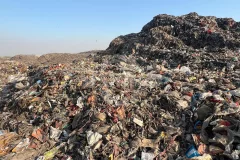
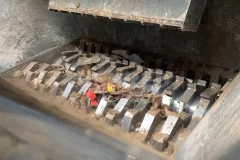
In the realm of waste management, innovative technologies play a pivotal role in addressing the challenges posed by landfill waste accumulation. Our GDL Two Shaft Shredder stands at the forefront of waste processing solutions, offering efficient and sustainable grinding capabilities for landfill waste. This article delves into the process of grinding landfill waste with our GDL Two Shaft Shredder, highlighting its effectiveness and environmental benefits. Understanding Landfill WasteLandfill waste comprises a diverse array of materials, including organic matter, plastics, paper, textiles, and metals. Traditional disposal methods often result in inefficient waste management practices, leading to environmental degradation and resource depletion. Effective management of landfill waste is imperative to mitigate these impacts and promote a circular economy. The GDL Two Shaft ShredderOur GDL Two Shaft Shredder is a state-of-the-art waste processing solution designed to grind and shred various types of waste
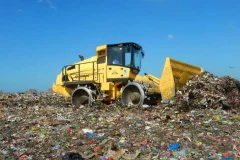
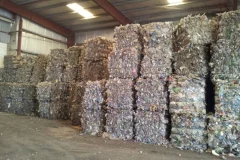
In a world where sustainability and resource conservation are of paramount importance, finding innovative ways to manage waste is crucial. Landfills, historically viewed as the final destination for waste materials, are now being reimagined as potential sources of valuable resources. One such resource is Refuse-Derived Fuel (RDF), and GEP ECOTECH is at the forefront of transforming landfill waste into a sustainable energy source.The Challenge of Landfill WasteLandfills have long been associated with environmental concerns, from methane emissions to soil and water contamination. As waste piles up in these sites, there is an urgent need to not only minimize the environmental impact but also harness the untapped potential within these waste heaps. This is where RDF comes into play.What is RDF?Refuse-Derived Fuel (RDF) is a sustainable energy source produced from the combustion of non-recyclable waste materials. These materials, typically found in landfills, include plastics, paper, cardboard, textiles, and more
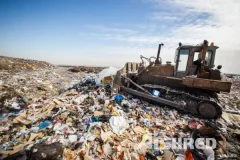
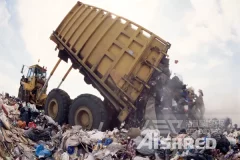
The shredding and recycling of landfill waste poses great challenges to operators, such as large waste capacity, mixed material types, the need for on-site operations, etc. Fortunately, AISHRED has considered all these issues of landfill waste shredding and has launched high-quality, cost-effective, and durable stationary and mobile shredding equipment specifically designed for landfill waste shredding. AISHRED's waste shredding equipment can well meet the arduous daily needs of landfill work, including easily shredding a large amount of waste, bulky waste, tough materials, their solid high torque motors and ultra sharp cutters. Common Landfill Waste Shredding Equipment1. Stationary primary shredderIn the process of landfill waste disposal, the front-end configuration of primary shredder can greatly improve the subsequent screening efficiency and quality, and is an essential pre-treatment process stage. However, stationary primary shredders require high-power power supply and a sturdy and flat installation
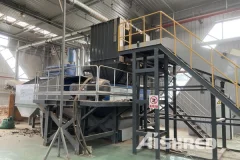
Industrial shredders effectively shred solid wood waste, tree trunks, railway sleepers, various construction waste, tires, solid household waste, old furniture, refrigerator cases, pallets with nails, woodworking waste, wood sheet waste, waste paper, glass waste, plastic waste, volumetric plastic containers, plastic pipes, PET bottles, film, almost any kind of existing solid waste. According to their design, shredders are divided into:Single-shaft shredderTwo-shaft shredderFour-shaft shredderSingle-shaft ShredderA single-shaft shredder is a low-speed shredder with a hydraulic press plate (prepressor) for crushing thick waste and high resistance to shredding: corrugated cardboard, wood waste, wooden boxes and pallets, various types of plastics, bulk polymer containers, plastic pipes, sprues , MSW, car tires.Single-shaft shredder operation principleThe material to be shredded is fed into the shredder's hopper. Loading of material can be carried out manually or mechanically, using an inclined conveyor or loader
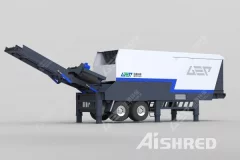
The market today presents a wide range of industrial shredders with different characteristics: low speed, high speed, primary, secondary, etc., and choosing the right shredder to meet the needs of the moment can be extremely difficult. All the machines offer basic technology, and particular settings that could lead astray in the purchasing process. In choosing the ideal machine for shredding waste, the characteristics to be taken into consideration today more than ever are therefore:versatilitythe speed of execution of the workease in maintenance operationsQuick and easy change of gridsThe versatility of a shredder that allows you to process different types of waste, in the desired size, is due to its preliminary settings. Through the adjustment of the grate it is possible to shred the waste in the desired size, but it is also through the time spent in its adjustment (and therefore of the machine downtime) that the real revenue coming from the machine is calculated. The ability to change the grid in a very
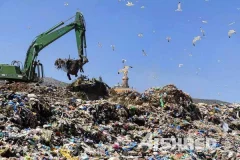

Industrial Shredder for landfill
2022-04-07According to the statistics, 70% of global waste is currently sent to landfills, often in an unregulated way. Household waste consists mainly of organic waste such as food, paper, cardboard, plastic or wood, while commercial waste typically consists of rubble, bricks, soil and concrete. Waste shredding is an effective way to reduce the need for landfills. Shredding makes it possible to mechanically separate various materials, allowing more homogeneous material to be fed into the sorting plant. This ensures more efficient sorting, better-functioning equipment and a higher share of recycled material. Shredded waste material can be roughly divided into two kinds of material: the kind that can be reused for similar purposes, and the kind that can be reused for other purposes – such as fuel for Waste to Energy plants. So shredding not only limits piles of waste, subsequently lowering transport costs – it also eliminates the environmental damage that would result from leaving waste untouched. And finally, it



